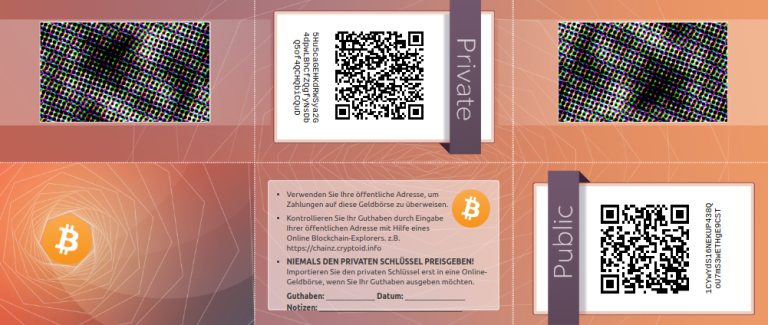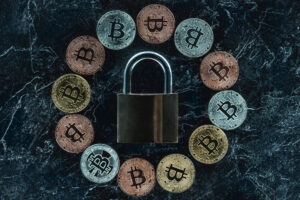A paper wallet is a piece of paper on which the public and private keys are written. The keys allow to access and send the stored cryptocurrencies. Paper wallets are classified as cold wallets, which are the safest way to store cryptocurrencies. These are however very unsuitable for everyday use.
Paper wallets are one option for storing cryptocurrency (typically bitcoin) on an offline medium. Paper wallets can be a great addition to any storage strategy for those looking for a middle ground between convenience and security. A typical way to acquire a paper wallet is through the purchase of cryptocurrency at a cryptocurrency ATMs. Cryptocurrency ATMs are a a convenient fiat-on-ramp option.
Uses and benefits of paper wallets
The paper is a tangible document that contains essential information for accessing the cryptocurrencies. These are the public and private key. The public key can be likened to a sort of "bank account number". Tokens can be sent to the public key and then assigned to the wallet. The private key, on the other hand, should never be shared with anyone. It works in a similar way to a password or PIN number. A private key acts as a code that is essential for accessing a cryptocurrency wallet and authorising transactions. It is important to note that if unauthorised individuals obtain the private key, they can acquire the stored cryptocurrencies.
Paper wallets are more secure than digital wallets because they don't rely on the internet to store funds. Because they are not connected to the internet, they are safe from viruses and hacking efforts that are directed at digital wallets. Paper wallets fall into the category of 'cold storage' wallets, which refers to the practice of removing data from the internet. The increased security of paper wallets is their main selling point.
The disadvantage of a paper wallet is that it is susceptible to damage or loss, so it is important to store it securely. To ensure that the paper wallet withstands time and physical damage, users can consider options such as laminating the document or choosing materials that are resistant to wear and tear. Users should also be careful about the way the paper wallet is made. The paper wallet should only be produced on trusted, secure equipment.









